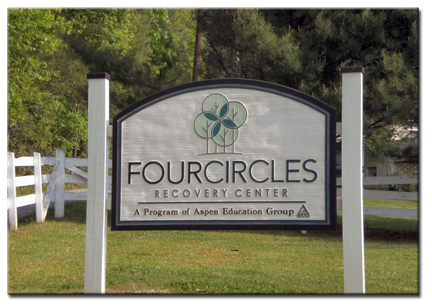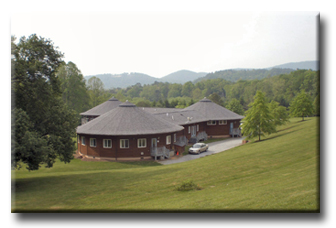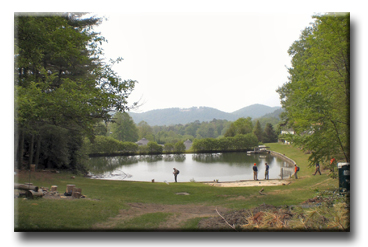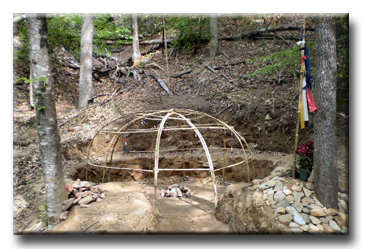| From Strugglingteens.com Visit Reports An Aspen Education Group Program Member of CRC Health Group Designed for young people ages 18-28 years old with a primary diagnosis of substance abuse, Four Circles is also a dual diagnosis program. The program opened in August 2006 and is licensed for 28 residents with the usual number in residence so far ranging from 15 to 20.
During my tour, we circled up with several of the residents who were in base camp at the time. Since the participants were older than the adolescents in programs Iíve usually visited, there was some evidence of the hard edges from the additional years of experience and hard knocks they had gone through before arriving at Four Circles. Coming from that perspective, they were impressive in their appearing to come to grips with their substance abuse demons and in the parts of the program that had most impacted them. The only exception was one young man who had just arrived, but even he had been there long enough to have a tentative hope that perhaps this program would give him what he needed. Although this is a coed program, it just happened that only young men were at the base camp when I visited.
The 43 acre property had been originally developed for organization retreats complete with a huge conference center, the obligatory North Carolina pond behind the conference center, and staff housing. The previous owners had never been able to fully utilize the facilities for that purpose, so Four Circles was able to lease the property, which has almost unlimited growth potential in a virtually brand new facility. The property is ideally suited for an outdoor program, and my main feeling while touring the campus and talking with the participants was one of serenity. When participants arrive, they start with a 3-5 day orientation at base camp. This orientation includes a physical and a full day with the three therapists. If it is found that a participant needs to detox, there is a hospital nearby where this can be taken care of, with the participant returning to the program after detox. The full day with the therapists is partly to match the participant with the best fit with therapist and group. After the orientation, the participant then joins the group that has been selected as the best fit.
The average length of the program is 65 days, but some participants have needed to stay as long as 90 days, and sometimes a participant will graduate after only 42 days. Two-thirds of the participantsí time is spent in the wilderness, with a routine of one week at base camp and two weeks in the wilderness. Their philosophical approach is to use the wilderness as the primary healing agency and using the wilderness as a metaphor for the participantsí lives. The time at the base camp is largely a check on how the participant is internalizing the lessons learned in the field. The group size is typically eight participants with one-on-one sessions with the therapists two days a week, daily group meetings and daily AA sessions. Each participant has a community AA sponsor when at the base camp. This is all part of the push to prepare the participant for good results when returning to the outside community upon graduation.
The participants go through five levels while at the program. When a participant reaches a higher level, he/she takes on responsibilities as a mentor to the newer participants. The fifth level is largely the preparation for graduation. Families are fully integrated into the program. Parents are given a clinical workbook to work through while their child is progressing through the program, supplemented by weekly phone calls with the participant and the therapist working with the family. The workbook and phone contact has been well received by parents. The primary focus of the weekly phone calls is the progress of the participant and codependency work. Parents are then invited to the graduation, which includes two days of family sessions as a culmination of the program and preparation for aftercare. Although the program had been in existence a little less than a year at the time of my visit, the implementation of the program reflected the years of personal experience the staff has. The only thing indicating this program had not been around for several years was that all the extra space in the conference center that is not yet being fully utilized. © Copyright 2012 by Woodbury Reports, Inc. |



